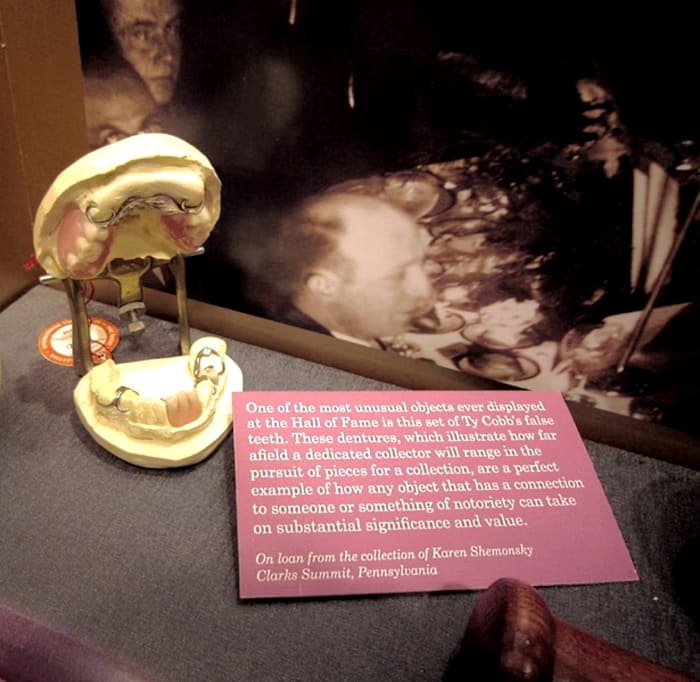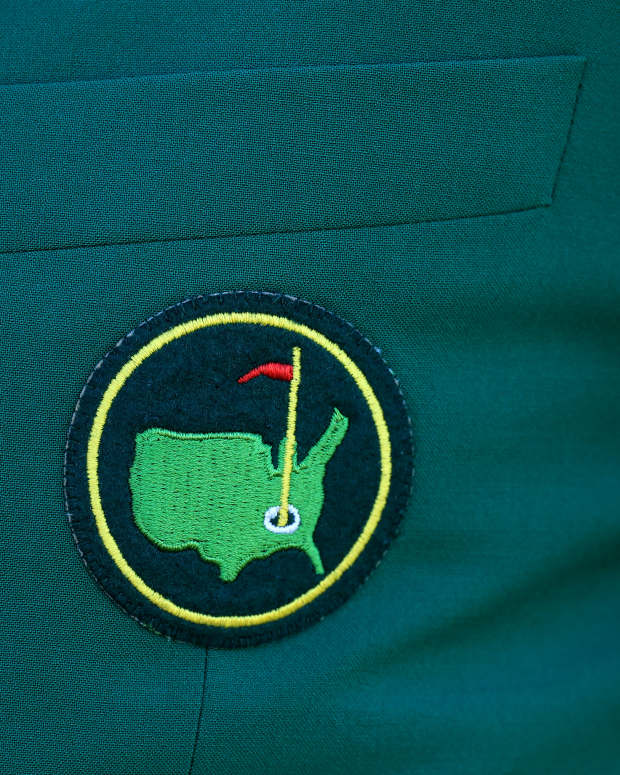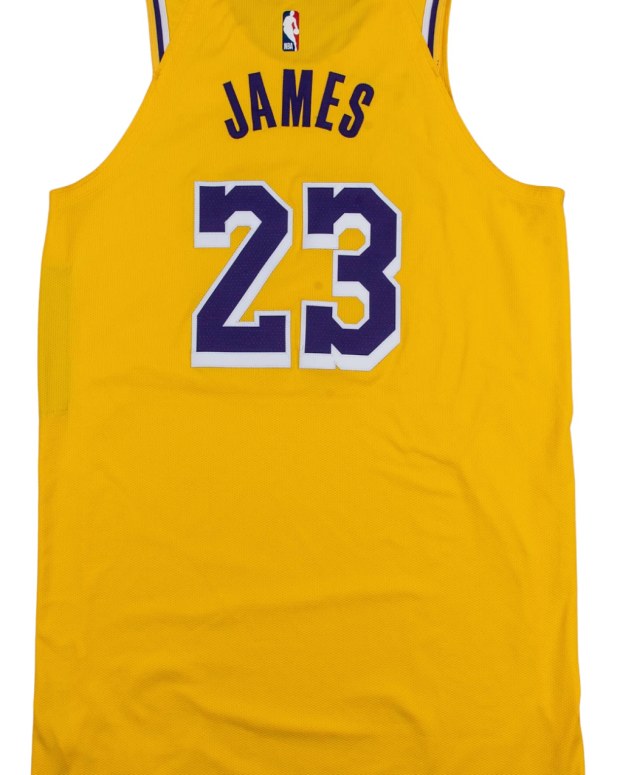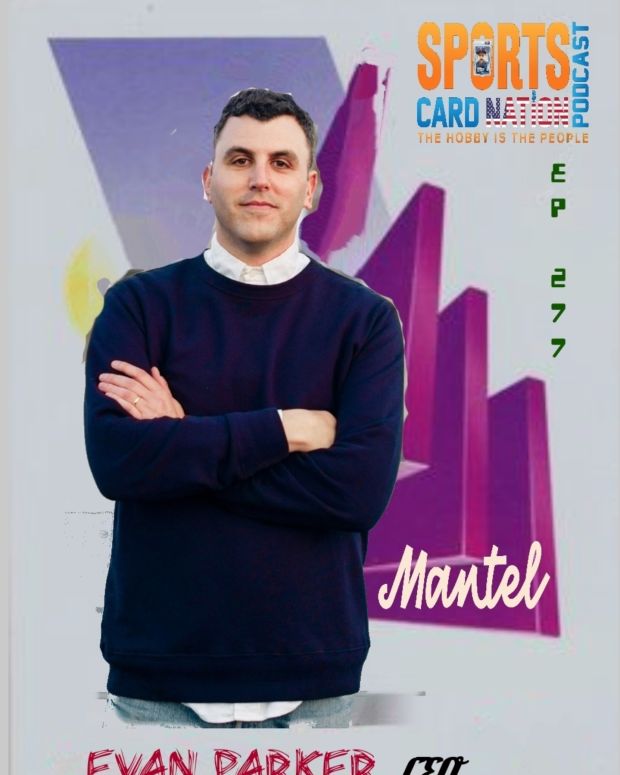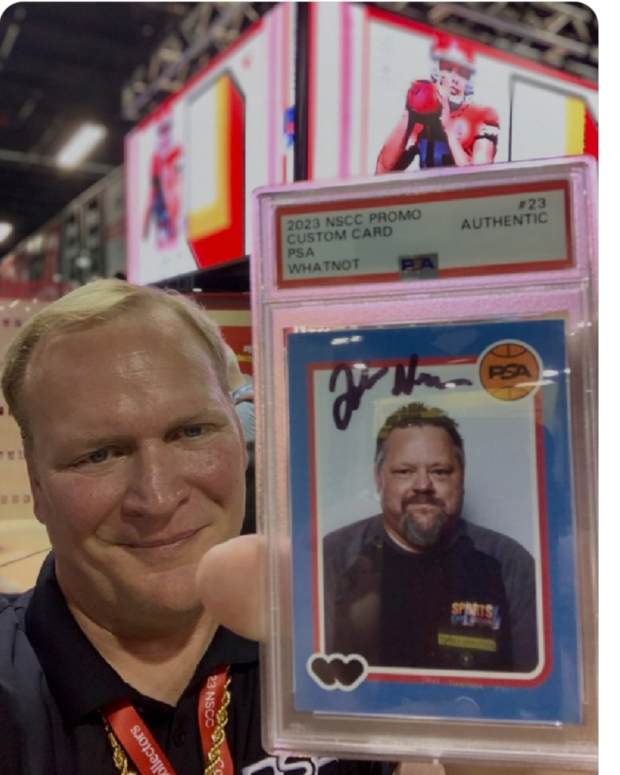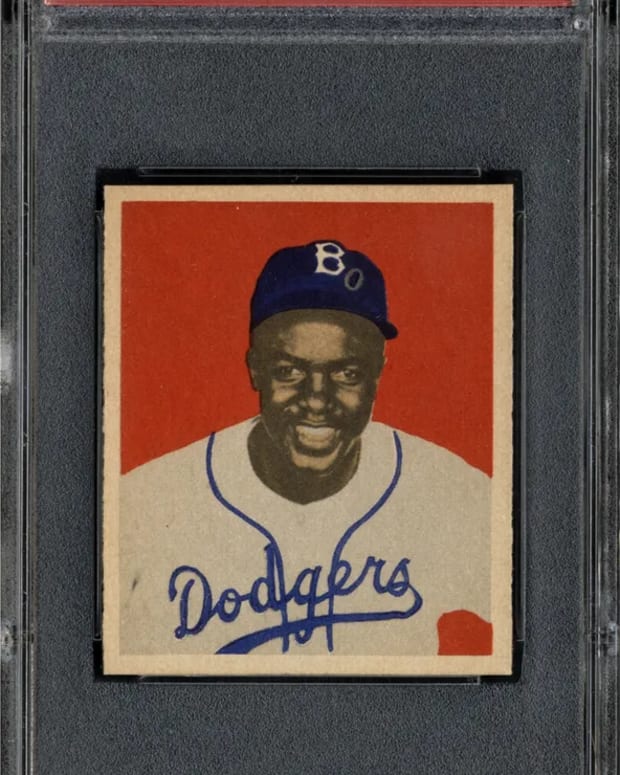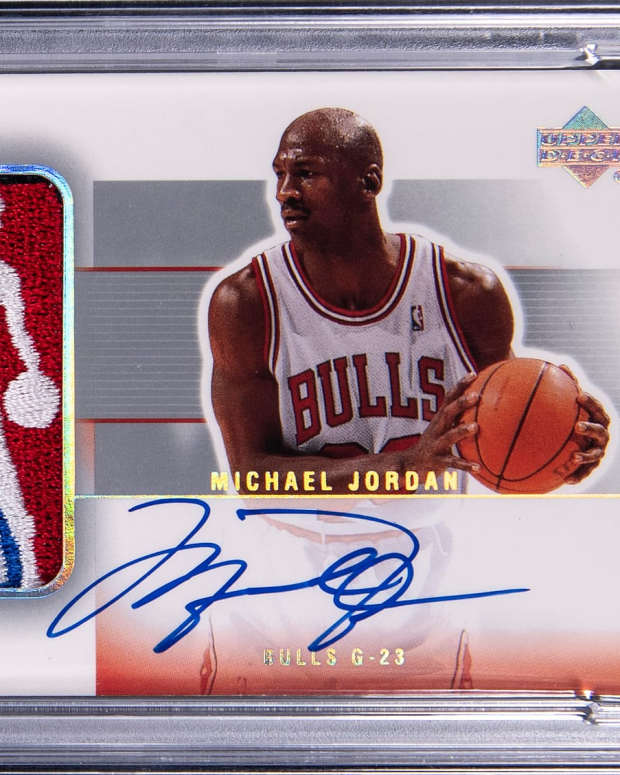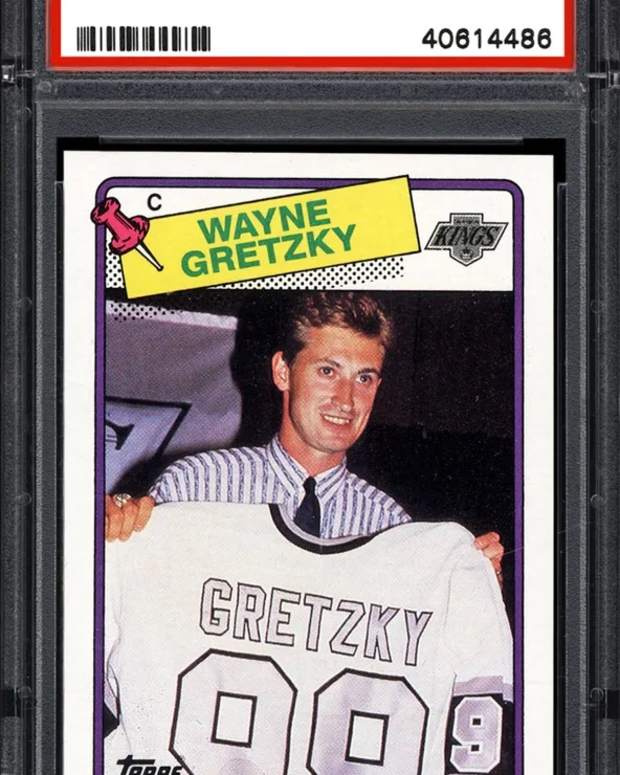
The strange case of Ty Cobb’s dentures: Evidence shows unusual memorabilia was fake
EDITOR’S NOTE: Author Ron Cobb is a member of the Board of Advisors of the Ty Cobb Museum in Royston, Ga.
There was a flurry of news articles in July 2022 when a set of dentures showed up in an SCP Auction that were said to have been personally owned and worn by baseball Hall of Famer Ty Cobb.
The dentures sold in September for $18,840.
SCP Auctions enticed potential bidders with this description of the item: “Offered here is one of the most unique pieces of sports memorabilia you will find in the hobby: The Georgia Peach’s personally used dentures. The upper and lower dentures come with Cobb’s original plaster denture holder and brass opening device. Originally sourced from the collection of Cobb’s biographer Al Stump, our consignor acquired them in the famous Barry Halper sale back in 1999 and has owned them ever since. At one point, Cobb’s famous jaws were loaned to the Baseball Hall of Fame where they were displayed in the museum in Cooperstown, N.Y. This incredible, one-of-a-kind artifact has been preserved in immaculate condition since Cobb’s death in 1961. These dentures have been featured on The History Channel’s ‘Lost and Found,’ ESPN’s ‘Most Valuable Whatever,’ as well as featured in USA Today, Associated Press and many other major media outlets. Includes loan documentation from the Baseball Hall of Fame and other provenance documents.”

Exhibit of purported Ty Cobb dentures sold by SCP Auctions in September 2022.
SCP Auctions/via Ron Cobb
Also See: Top 10 weirdest collectibles sold at auction
Photos displayed in the electronic catalog included the dentures from various angles, and a photocopy of the Hall of Fame and Museum loan receipt was shown as well.
FIRST APPEARANCE IN HOBBY
These dentures first appeared publicly in a May 22, 1995 Sports Illustrated article titled “Sultan of Swap” by Franz Lidz. The article described collector Barry Halper’s extensive memorabilia collection, emphasizing the items he had for the most famous players, including Babe Ruth, Willie Mays, Jackie Robinson and, of course, Ty Cobb. The article was richly illustrated with photos of unique and valuable items for each of those famous players. The photo of “Cobbabilia,” the term Lidz coined for Ty Cobb memorabilia, showed a Cobb-used glove, uniform, pipe, dentures, and the now infamous shotgun. Halper told Lidz that he had obtained all his Cobbabilia from sportswriter Al Stump.

Photo of the Ty Cobb memorabilia sold by Al Stump to Barry Halper from a 1995 Sports Illustrated article.
Sports Illustrated/via Ron Cobb
Also See: 1921 Babe Ruth bat sells for record $18.5 million
In 1999 the entire Halper collection was sold by Sotheby’s at a seven-day public auction that netted more than $22 million. Among the items offered in the Sotheby's catalog were the Ty Cobb dentures, with a pre-auction estimated sale price of $300-$500. They were purchased by Karen Semonsky, the daughter of a dentist, who was not previously a baseball memorabilia collector but was attracted to bid because of her recollections of her father’s dental career. After submitting the winning bid of $6,500 and receiving the dentures at home, she displayed them proudly under a glass dome on her dining room table surrounded by “... a glove, a ball and books about Ty Cobb.”
In 2001 the Baseball Hall of Fame agreed to display the dentures, apparently at the request of Semonsky. The same Sports Illustrated article described her reaction when the agreement to display the dentures was finalized: “She was thrilled last week when the Baseball Hall of Fame accepted, on loan, Cobb’s disencraniumed dentures, which will be displayed in Cooperstown under glass, like roast pheasant, all summer long.”
Also See: Rare documents from Babe Ruth sale to Yankees up for bid
When the HOF display ended in 2003, Semonsky approached the Ty Cobb Museum in Royston, Ga., Cobb’s hometown, about displaying them there. On June 20, 2003, a meet-and-greet event was held at the museum, with Semonsky and her husband in attendance, and the dentures display was unveiled. The dentures remained on display in Royston until March 20, 2014, when they were removed without fanfare and returned to the owner. After that, the dentures dropped out of sight and nothing was heard about them until their recent offering at auction.
In the years between 2003 and 2014, when the dentures were displayed at the Ty Cobb Museum, there was much research done on the myths of Cobb and the authenticity of Cobb memorabilia that came to the collectors market in the 1980s and early ’90s. Among the principal findings was the fact that Stump, Cobb’s biographer, had forged and sold into the hobby a virtual treasure trove of letters, autographs, diaries, scrapbooks, annotated magazines and photos. In addition, he had created a large number of fake personalized items that he claimed had belonged to and been used by Cobb. Among these now discredited items were practically all of the Cobbabilia that was part of the Barry Halper Collection, including the shotgun, bat and diary.
In July 2021 the Cobb dentures showed up at auction by Goldin Co., formerly Goldin Auctions. In their description of the dentures, Goldin stated that they were displayed for 10 years in the Ty Cobb Museum. The executive director penned a letter to the auction house asking that any reference to the Ty Cobb Museum be removed from their description because that would surely be interpreted by potential bidders that the museum vouched for their authenticity. In fact, based on the research findings during and after it had displayed the dentures, the museum no longer believed that the dentures were authentic. Within hours of receiving the letter, Goldin removed the dentures completely from the auction.
When the dentures appeared in the July 2022 SCP Auction, it also made reference to their previously being displayed at the Ty Cobb Museum. The museum sent a similar letter to SCP Auctions, asking that it not be referred to in the description of the dentures because it now disputed their authenticity. SCP Auctions’ response was to modify the description as requested, removing all references to the Ty Cobb Museum. But in its place, SCP Auctions then added a reference to the Baseball Hall of Fame having displayed the dentures, and they also added an image of the 2001 HOF loan agreement with the owner to prove that point. Based on the 12 bids received and the $18,840 high-bid sales price, it seems that the inference of authenticity based on the HOF Museum display was indeed believable to some.
WHERE DID STUMP GET COBB DENTURES?
We know from the 1995 Sports Illustrated article that the source of the Cobb dentures in Halper’s collection was Stump, Cobb’s biographer. That naturally brings up the question: Where did Stump get them?
Stump was the co-author of Cobb’s autobiography, “My Life in Baseball: The True Record,” which was released shortly after Cobb’s death in July 1961. Almost 20 years later, Stump began to offer for sale in the collectors market a large number of memorabilia items he claimed were given to him by Cobb. Stump stated that Cobb had given these items to him in 1961 as they finished collaborating on the book. What Stump offered for sale in 1980 was extensive, including both personal and baseball-related items, as well as numerous letters, signed photos and signed magazine pages.
Conspicuously missing from this long list of items Stump offered are dentures that Cobb purportedly owned and wore. The absence from Stump's 1980 list of his Cobbabilia strongly suggests that Stump did not have the dentures in his possession at that time.
Many of the items Stump offered to Howard Smith in 1980 ultimately wound up in the Barry Halper Collection. Most of these items are now well-known to the hobby as fakes or forgeries that were actually created by Stump.
PROVING AUTHENTICITY
Definitive proof of authenticity of a relic like Cobb’s dentures is likely impossible. However, it seems that something more than SCP Auctions showing a loan receipt from the Hall of Fame is needed. No doubt the Hall of Fame Museum believed in 2001 that the dentures were authentic based on the Stump source and Halper Collection provenance — as did the Ty Cobb Museum in 2003.
But believing that something is authentic does not make it so, as one directly relevant case in point clearly shows. In 2001 the Baseball Hall of Fame displayed with great fanfare a 1946 Ty Cobb diary which came to it with the exact same provenance as the dentures — from Stump through the Halper Collection. This was part of the gift of Halper memorabilia from Major League Baseball. After autograph experts visiting the Museum questioned the 1946 diary's authenticity, it was sent to the FBI for examination and determined to be a forgery, later attributed to Stump.

A photo of the Al Stump-forged 1946 Ty Cobb diary that was displayed as genuine by the Baseball Hall of Fame Museum. Stump sold the diary to Barry Halper as part of his Cobbabilia collection. It was later examined by the FBI and determined to be forged.
Ron Cobb
Also See: Collector Josh Rawitch relishes dream job at Baseball Hall of Fame
Apparently using prior displays as a statement of authenticity has been a problem for the Hall of Fame in other instances. In reply to my inquiry about the dentures, they stated: “Currently, the Hall’s loan agreement has language that prohibits lenders from mentioning the Hall in any printed sale advertising. This was not the case when the dentures were loaned in 2001. Now that this language is in place, it prohibits anyone from mentioning the Hall’s name or using images of Hall of Fame documents to add authenticity to a piece.”
PROFESSIONAL OPINIONS
To investigate further I asked three different dentists, who are all baseball fans as well as SABR members, to examine the photos of these dentures and provide a professional opinion.
Dr. Howard M. Elson of Pittsburgh described the dentures as a dental articulator, a plaster cast of the mouth of a patient, and two sets of removable dentures. A dental articulator is a device normally used only in the lab, whose purpose is to test and confirm the fit of a set of dentures. In this case, there is an upper denture with six teeth, three molars on each side, and a lower denture with three front teeth. Both dentures would be worn by the patient as removable devices and not permanently installed.
Dr. Elson stated that it would be quite unusual for a patient to be in possession of the complete apparatus, since the articulator device and the plaster cast of the mouth are intended for laboratory use only.
“There is no reason that Cobb should have them. They wouldn’t be used to hold the dentures when not being worn,” Elson said. “If the dentures broke, a new impression would be taken. If these are an extra set, they also would not be stored dry. They should be kept moist, or they can lose their shape. The dentures themselves look pristine, almost as if they’d never been worn.”
Dr. Harvey Frankel, another dentist and baseball fan from Pittsburgh, is also a long-time memorabilia collector. He examined the photos of these dentures and weighed in with this professional opinion:
“These partial dentures were not likely delivered to the patient,” he said. “There is not sufficient evidence or documentation to attribute these prosthetic dental appliances to Ty Cobb.”
As an experienced collector, Dr. Frankel also recognized the obvious insufficiency of a Hall of Fame loan agreement as the sole piece of physical evidence of these dentures having been owned or worn by Cobb.
Dr. Gary Livacari of Park Ridge, Ill., a SABR member and recognized dead-ball era historian, had this to say after examining the auction photos: “In my 43 years of dental practice, I have never seen an instance where a set of partial dentures still affixed to the mouth cast and articulator has been delivered to a patient. And, I can hardly conceive of a case or circumstance where that would ever happen. … After carefully examining the photos here, I see no evidence of wear at all, which would certainly be visible if these dentures had ever been worn by anyone."
COBB RECOLLECTIONS
Herschel Cobb is a grandson of Cobb, the son of Ty’s youngest son, Herschel R. Cobb. Herschel was 8 years old at the time of his father’s death, and for the next several years spent many of his summers and holidays at Ty’s home in Atherton, Calif., or at his cabin on Lake Tahoe.
When I asked about his recollections of his grandfather wearing dentures, Herschel said: “... I was fortunate enough to spend part of every summer from 1954 thru 1958/59 with him, either at his home at 48 Spencer Lane, Atherton, or his cabin at Cave Rock, Lake Tahoe, NV. At the cabin, I usually used a bedroom that shared a bathroom with him. It was between the two bedrooms on the South side of the cabin. I never saw him with dentures — either wearing them, removing them, cleaning them or otherwise. …”
Dr. Rex Teeslink is a vascular and interventional radiologist in Augusta, Ga. At age 88, Dr. Teeslink remains very active in this profession and still travels worldwide teaching physicians how to use his life-saving vascular tools and inventions. He also met and developed a close personal relationship with Ty Cobb — a connection probably unlike that of any other person living today. So close was Teeslink to Cobb and his family that he was asked to serve as a pallbearer at Cobb’s funeral.
Teeslink was between his freshman and sophomore year in medical school in the late spring and summer of 1961. His parents had recently moved to Cornelia, Ga., where his father was in the poultry business, and he had come home for the summer break. Cobb was living in Cornelia at that time, having purchased mountain-top acreage nearby to build his final retirement home and having rented a house there in the interim. A friend of Teeslink’s father knew Cobb and invited Teeslink to join him for lunch at Cobb’s house so he could “meet the famous baseball player.”
During lunch, Teeslink noticed and commented on a veritable mountain of mail that was piled up on Cobb’s dining room table. After lunch, Cobb asked Teeslink if he would like to assist him in getting the replies already written mailed out and to help him get the remaining mail sorted and organized. Teeslink agreed, and he and Cobb spent the rest of that afternoon, May 14, 1961, working together on the mountain of Cobb’s fan mail. That day was life changing for both of them.
At the end of that day, Teeslink was surprised when Cobb asked if he would stay with him and become his personal assistant. Cobb wanted assistance in daily activities like mail, shopping and housework. He had also decided, no doubt, that Teeslink, as a medical student, would also be a great help to him in managing his taxing medical routine for dealing with diabetes, high blood pressure, kidney disease and advanced prostate cancer.
Very politely, Teeslink responded that he could not, as he desperately needed to find a job to earn money for next year’s medical school costs. Cobb was insistent, however, and proposed that if Teeslink would agree to stay with and assist him during this summer break from school, there would be no future worries for him about school money.
They never discussed money after that. From that day forward, Teeslink stayed with and assisted Cobb continuously, first in the rented home in Cornelia and later, in Cobb’s final days, at Emory Hospital in Atlanta. He went everywhere with Cobb — to the grocery store, pharmacy, doctor, diner and to visit the Cobb Hospital in nearby Royston. There was nowhere Cobb went during those 64 days, day or night, that Teeslink did not accompany him.

Photo of Ty Cobb’s casket taken at his July 19, 1961 funeral in Royston, Ga. His young personal assistant, medical student Rex Teeslink, who was asked by Ty to serve as a pallbearer, is fifth from the right.
Ron Cobb
When asked about Cobb’s dentures in a recent phone conversation, Teeslink replied emphatically: “I was literally in the presence of Ty Cobb continuously, 24 hours a day, seven days a week, from May 14, 1961 until July 17, 1961. For the last two months of his life, I watched each day as Ty Cobb tended to his daily toiletries. ... I stayed with him day and night at his home in Cornelia, and then while he was at Emory Hospital in his final days, I slept each night on a cot that was brought into his room. Not once during this entire time did I ever observe any removable dentures, or see him take dentures of any kind out of his mouth. Simply and unquestionably stated: Based on my firsthand experience in 1961, which I vividly remember, Ty Cobb did not wear removable dentures. Period!”
CONCLUSIONS
Based on the information above, it is reasonable to conclude that the purported Cobb dentures were not actually owned or worn by him.
After examination of photos of the dentures, three experienced dentists gave an opinion that these were most likely not Cobb’s dentures and probably were never worn at all.
Secondly, statements by two individuals who knew Cobb well assert clearly and emphatically that he did not wear dentures at all.
Thirdly, the provenance provided by the auction house sourcing the dentures to Al Stump places them directly within the massive and well-known fraudulent memorabilia enterprise that Stump carried out in the 1980s. Hence, this provenance strongly denounces their authenticity rather than proving it.
Additionally, the proof of display of the dentures in the Hall of Fame Museum has been shown to be worthless for the same reason that display of the forged Cobb diary would be worthless as an element of any claim of authenticity.
So, were the purported dentures merely oral fixation, irrational exuberance, or outright fraud?
According to the evidence, the answer to all three questions would be yes.
Semonsky’s 1999 purchase of the dentures as her first piece of baseball memorabilia, prompted by memories of her father’s dental career, shows a measure of oral fixation. The $18,840 sales price of the dentures in the September 2022 auction shows a large measure of irrational exuberance, as does Semonsky's 1999 purchase for $6,500 when the pre-auction estimate was only $300 to $500.
Well-known productions of fakes and forgeries by Stump to amass his Cobbabilia collection, to which these dentures clearly belong, illustrates the outright fraud in his sale of the dentures.
— Dr. William “Ron” Cobb is a retired Engineer and Management Consultant who spends his time researching and writing history —mostly baseball and the Civil War. He has nine books to his credit. Ron served on the Board of Advisors of the Ty Cobb Museum from 2004-2014, rejoined in 2018 and continues to serve in this position. Ron authored the breakthrough SABR article in 2010 that first exposed Al Stump's forgeries and fake memorabilia enterprise.

